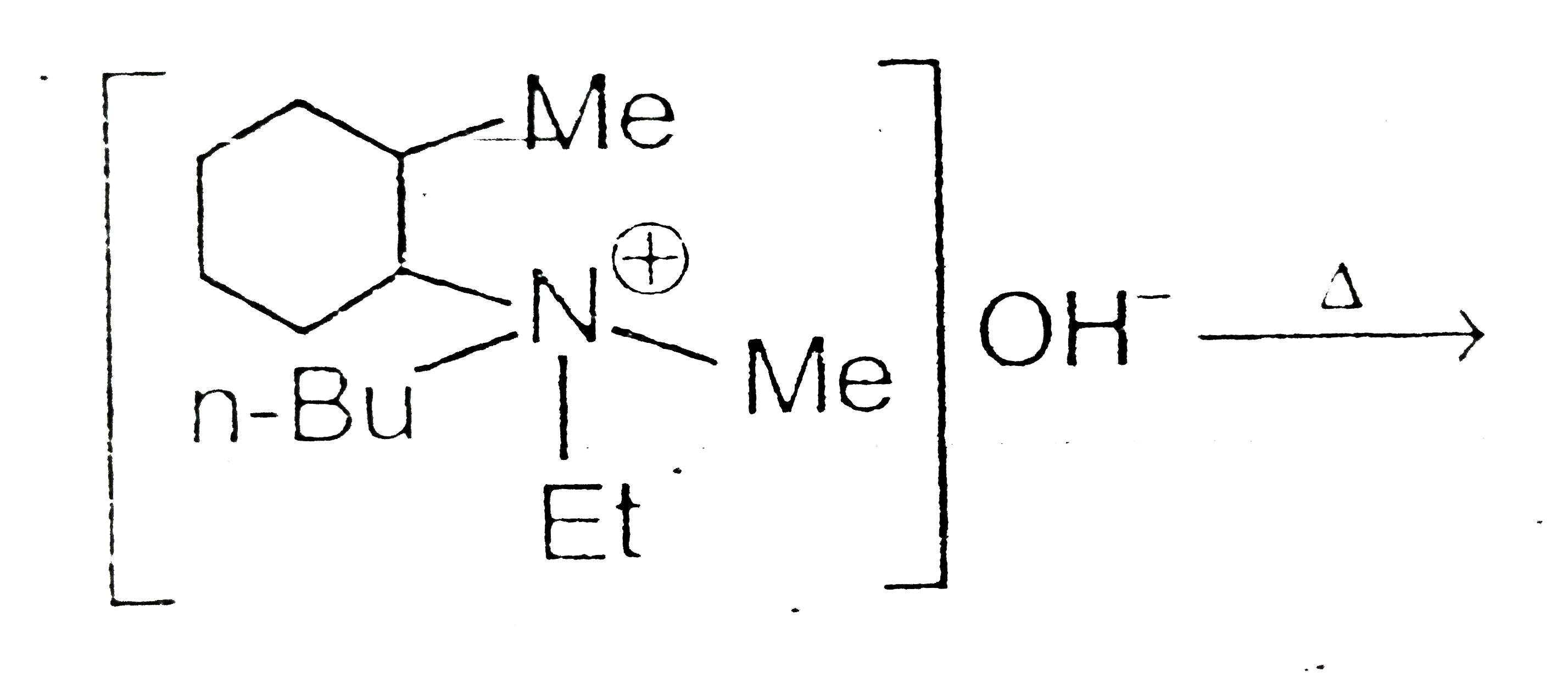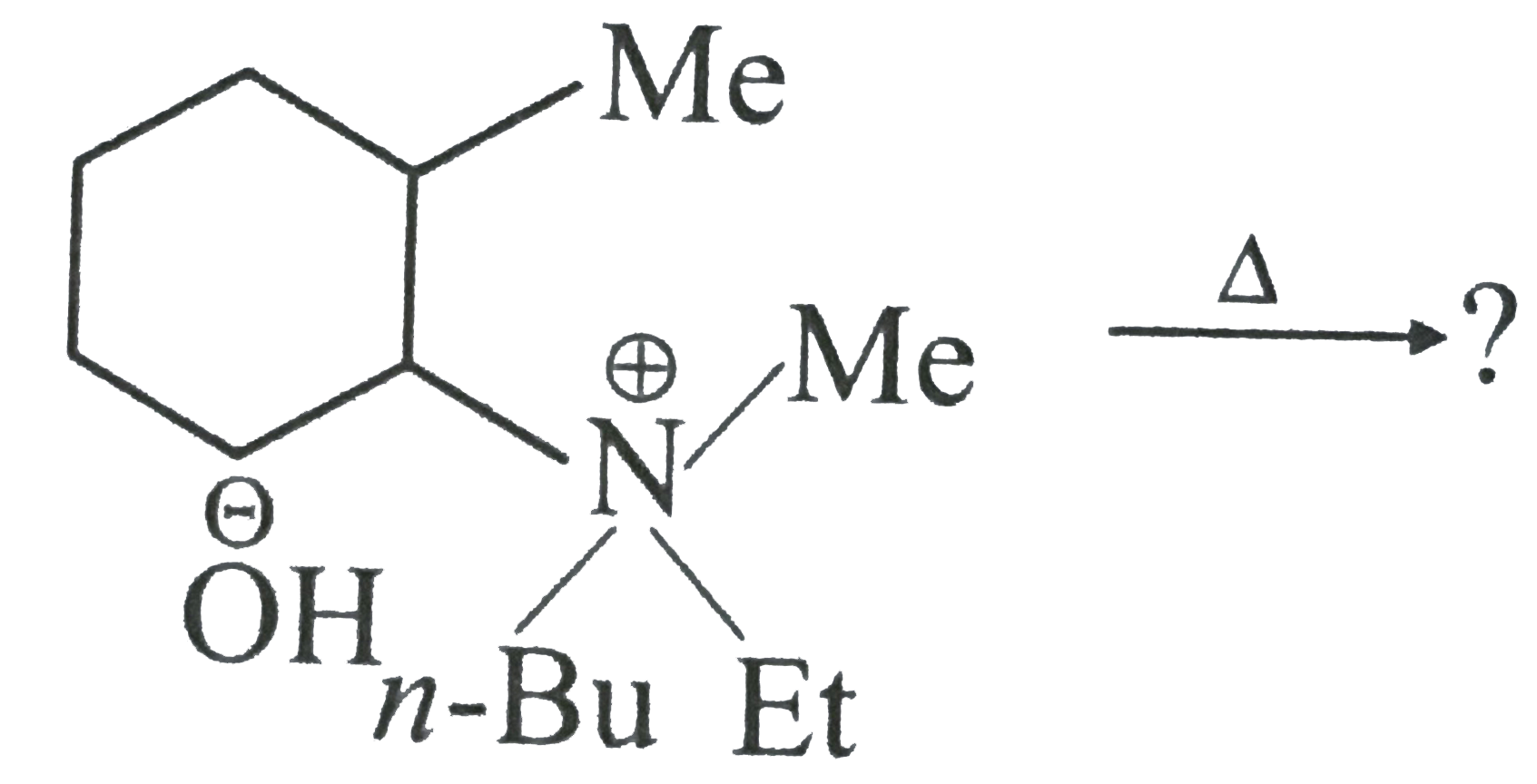The trans-alkenes are formed by the reduction of alkynes with
H2−Pd/C,BaSO4
NaBH4
Na/liq. NH3
Sn−HCl
The correct Answer is:C
To solve the question regarding the formation of trans-alkenes from alkynes, we will follow these steps:
Step 1: Understand the Reaction
We need to reduce alkynes (which have a triple bond) to form alkenes (which have a double bond). Specifically, we want to form trans-alkenes, where the substituents on the double bond are on opposite sides.
Step 2: Identify the Reduction Method
The reduction of alkynes can be achieved using various catalysts. The key is to find a method that specifically leads to the formation of trans-alkenes.
Step 3: Analyze the Options
We have several catalysts to consider:
1. Hydrogen with palladium (H2/Pd)
2. Hydrogen with palladium on barium sulfate (H2/Pd-BaSO4)
3. Sodium in liquid ammonia (Na/NH3)
4. Sodium borohydride (NaBH4)
Step 4: Evaluate Each Catalyst
- H2/Pd: This catalyst typically leads to the formation of cis-alkenes due to the syn-addition of hydrogen.
- H2/Pd-BaSO4: This is a Lindlar catalyst, which also results in the formation of cis-alkenes.
- Na/NH3: Sodium in liquid ammonia is known to reduce alkynes to trans-alkenes through a radical mechanism, allowing for the formation of the desired product.
- NaBH4: This is a milder reducing agent that does not typically reduce alkynes to alkenes effectively.
Step 5: Conclusion
The only catalyst that leads to the formation of trans-alkenes from alkynes is sodium in liquid ammonia (Na/NH3). Therefore, the correct answer is option 3.
Final Answer
The trans-alkenes are formed by the reduction of alkynes with sodium in liquid ammonia (Na/NH3).
---
We need to reduce alkynes (which have a triple bond) to form alkenes (which have a double bond). Specifically, we want to form trans-alkenes, where the substituents on the double bond are on opposite sides.
The reduction of alkynes can be achieved using various catalysts. The key is to find a method that specifically leads to the formation of trans-alkenes.
We have several catalysts to consider:
1. Hydrogen with palladium (H2/Pd)
2. Hydrogen with palladium on barium sulfate (H2/Pd-BaSO4)
3. Sodium in liquid ammonia (Na/NH3)
4. Sodium borohydride (NaBH4)
- H2/Pd: This catalyst typically leads to the formation of cis-alkenes due to the syn-addition of hydrogen.
- H2/Pd-BaSO4: This is a Lindlar catalyst, which also results in the formation of cis-alkenes.
- Na/NH3: Sodium in liquid ammonia is known to reduce alkynes to trans-alkenes through a radical mechanism, allowing for the formation of the desired product.
- NaBH4: This is a milder reducing agent that does not typically reduce alkynes to alkenes effectively.
The only catalyst that leads to the formation of trans-alkenes from alkynes is sodium in liquid ammonia (Na/NH3). Therefore, the correct answer is option 3.
The trans-alkenes are formed by the reduction of alkynes with sodium in liquid ammonia (Na/NH3).
Topper's Solved these Questions
- HYDROCARBONS BOOK - ICSECHAPTER - HYDROCARBONS EXERCISE - TRUE OR FALSE TYPE QUESTIONS
35 Videos
- HYDROCARBONS BOOK - ICSECHAPTER - HYDROCARBONS EXERCISE - FILL IN THE BLANKS TYPE QUESTIONS
22 Videos
- HYDROCARBONS BOOK - ICSECHAPTER - HYDROCARBONS EXERCISE - ESSAY (LONG ANSWER) TYPE QUESTIONS
28 Videos
- EQUILIBRIUM BOOK - ICSECHAPTER - EQUILIBRIUM EXERCISE - NCERT TEXT-BOOK EXERCISE
109 Videos
- HYDROGENBOOK - ICSECHAPTER - HYDROGENEXERCISE - NCERT TEXT-BOOK EXERCISE (With Hints and Solutions)
53 Videos
Similar Questions

Which of the statements are correct about the reactivities of alkene, alkynes, and arenes?
View SolutionAlkynes on reduction with sodium in liquid ammonia form trans alkenes. Will the butene thus formed on reduction of 2-butyne show the geometrical isomerism ?
View SolutionIn the conversion of alkyne to trans-alkene by Birch reduction using alkali metals (such as Na or K) in liquid NH3 and alcohol (MeOH or EtOH),
R−≡−RNa+liq.NH3−−−−−−−−→+EtOH
the mechanism takes place in the formation of intermediate species in the following sequence:
View SolutionWhich of the following catalyst is/are used for partial reduction of alkyne ?
View SolutionWhen two possible alkenes can be formed in a reaction the most stable alkene is the preferred product This generation is known as
View SolutionWhat are alkynes?
View SolutionName the first member of Alkynes.
View Solution
The alkene formed as a major product in the above elimination reaction is
View Solution
The alkene formed as a major product in the above elimination reaction is:
View SolutionWhy are certain compounds called hydrocarbons? Write the general formula for homologous series of alkenes and alkynes and also draw the structure of the first member of each series. Write the name of the reaction that converts alkenes into alkanes and also write a chemical equation to show the necessary conditions for the reaction to occur.
View Solution
